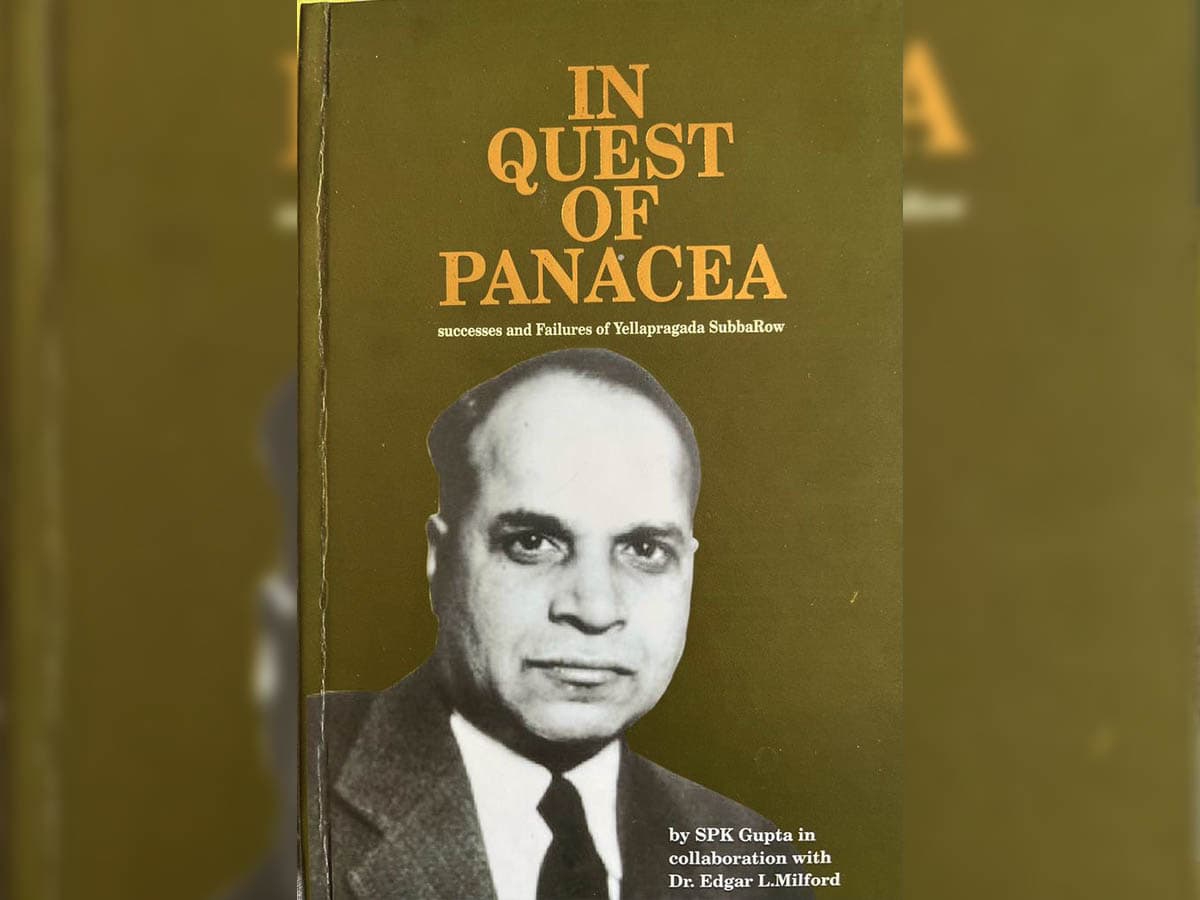
“You’ve probably never heard of Dr Yellapragada SubbaRow. Yet, because he lived, you may be alive and are well today. Because he lived, you may live longer,” thus wrote the Argosy magazine, USA in its edition in 1950.
Seventy-four years later, as we observe the 129th birth anniversary of this great medical scientist on January 12, the situation about his seminal contributions to modern medicine and his struggles to achieve them remain little known.
What should have been folklore and a life celebrated as a national icon in India, Yellapragada Subba Row, continues to be a great unsung hero in his native country. If Dr Yellapragada SubbaRow, described by some as the ‘miracle man of miracle drugs’, largely ignored by the West is at least known to India in the 21st century, a sizeable share of the credit should go to S P K Gupta, a veteran journalist and chronicler of Science history.
S P K Gupta with Dr Edgar L Milford documented the entire life, tribulations and achievements in a 500-page, well researched book titled In Quest of Panacea in 1987. The exhaustive volume, with suitable revisions and updates by Gupta and Milford has been reprinted in 400 pages in December 2023 by Evelyn Publishers and Bee Media Events.
Ironically, Gupta passed away on January 29, 2023. The entire exercise of the reprint was undertaken by Devi Prasanna, wife of Gupta; M R Rao, a close relative of Yellapragada SubbaRow and former executive of Coromandel International and Orsu Ramesh of Bee Media. An OTT series is also in the making.
The book brings out the successes and failures of Dr SubbaRow, who hailed from the coastal town of Bhimavaram in Andhra Pradesh. He was a biochemist with Lederle Laboratories in the US, after studying in the Harvard Medical School. In groundbreaking work, he achieved breakthroughs in developing drugs for the treatment of Cancer, unlocked the mechanism of ATP (adenosine triphosphate) as an energy source in cells, discovered aureomycin (antibiotic), invented the phosphate estimation method, the anti cancer and anti rheumatoid methotrexate, drug for elephantiasis, tetracycline and many other drugs. He died on August 8, 1948 at a rather young age of 53.
In his Prologue to the book Dr P M Bhargava, founder director of the CCMB (Centre for Cellular and Molecular Biology) writes: “Rarely, extremely rarely, a person comes in the world scene and transforms science and our lives by making a large number of major discoveries in and otherwise makes important contributions to more than one basic field and does not only get a Nobel Prize but does not get to be known by name to most people, including scientists around the world.”
I am referring to Yellapragada SubbaRow. Such an individual is perhaps born once in a thousand years or more. I do not believe there is any other person in the documented history of biology and medicine over the last 5000 years who made such a large number of basic discoveries that are applied so widely, Dr Bhargava says.
Most of the famous scientists and Nobel laureates are known for their one major discovery that has a lasting impact on our lives. There are some like Albert Einstein, John Bardeen and Hargobind Khurana who are known for two discoveries. But, the contributions of Dr SubbaRow are multiple and transcend areas. Yet, he remains one of those greats never to win a Nobel Prize too.
Recognition to the outstanding and generational contributions of Dr SubbaRow has been coming in a trickle. Posthumously, Lederle Labs honoured SubbaRow’s memory with a plaque and a library at his research laboratory. Several articles acknowledging his contributions have also appeared in the American and British scientific journals and media.
But, the greatest contribution to keep Dr SubbaRow’s works and memory in public domain should probably go to S P K Gupta and the support by Milford, who scoured the archives of Lederle Laboratories and mined a rich load of both personal and research papers. He also joined Gupta in interviewing SubbaRow’s associates all over the US and finally in funding the book project too.
The Government of India issued Rs one commemorative postage stamp on the birth anniversary of Dr SubbaRow in 1995. The combined State of Andhra Pradesh installed a bust of him at the Nizam Institute of Medical Sciences, Hyderabad. The Guntur Medical College installed his statue on its campus.
The School of Biotechnology at Guru Gobind Singh Indraprastha University, New Delhi has been celebrating Yellapgrada SubbaRow’s birthday every January for over 20 years through a memorial lecture by a leading scientist and a documentary film and a poster exhibition on his life and works prepared by Gupta.
Similarly, the National Institute of Nutrition has named a building block after Dr SubbaRow while the University of Hyderabad and the GITAM University in Visakhapatnam have named an auditorium in his memory.
Those who are familiar with the extraordinary and long lasting contributions of Dr Yellapragada SubbaRow feel that his works should be taught in medical schools as an inspiration and he deserves a Bharat Ratna posthumously.



